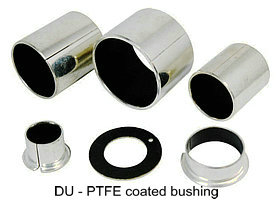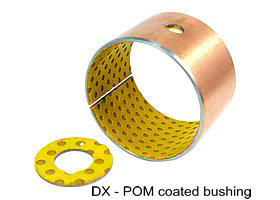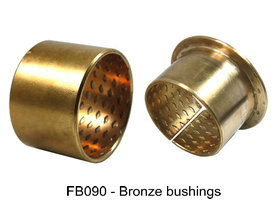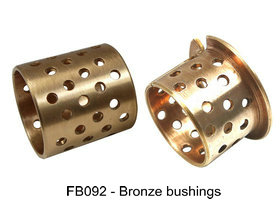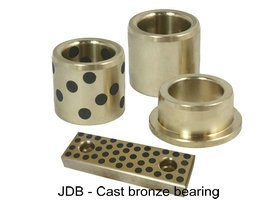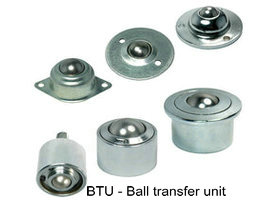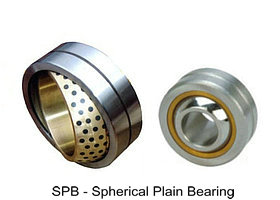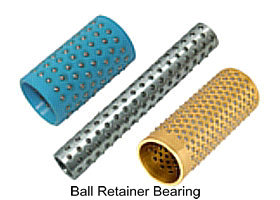Recently, with miniaturization and high-speed rotation of the increasingly high demand, so the bearing performance put forward higher requirements. In particular, to reduce the size of cars and reduce fuel consumption of this automobile industry composite bearings have high demand. On the other hand, the electronics industry also requires very little bearing to facilitate the conservation of energy and electronic equipment when more hours without vibration.
Despite the increasingly high requirements bearing, but also it requires the use of a longer life Bearing life than before. However, since the bearing balls occasionally peeling occurs, thus extending bearing life is very difficult. In order to meet users increasingly stringent requirements, it is necessary to improve the cleanliness of steel by reducing steel oxide and nitride inclusions.
For cleaner steel, the analysis of the relationship between fatigue life and the cleanliness of steel is very difficult, so you need a new method of measuring inclusions using conventional ASTM methods. This article describes Jintai developed techniques for the production of ultra-clean steel bearings and new inclusions measurement techniques.
First, the ultra-clean bearing steel production technology
1, ultra-clean steel production
Jintai smelting, casting for the high carbon chrome steel bearings. This steel in addition to more stringent refining processes to the oxide and nitride inclusions minimum Outsider, its production process and the same as ordinary steel.
After full hot metal pretreatment dephosphorization and desulfurization of molten iron in a converter, decarbonized. Converter slag is a kind of dross. In order to reduce oxide inclusions, slag is cut off, thus the oxide inclusions will not flow into the ladle. Refining (heating, degassing) and continuous casting, molten steel is usually more stringent than the inert gas shield to prevent contact with air secondary oxidation. In the refining process, due to the very high alkalinity of slag, molten steel sufficiently stirred, the oxide inclusions (mainly aluminum oxide) floating into the slag, thus, the steel becomes cleaner, only a small amount of inclusions. When casting, Jintai using the intermediate tank heater accelerated rise inclusions in molten steel, the use of larger intermediate tank.
To reduce the nitride inclusions, it is necessary that the minimum content of titanium steel. Mainly from titanium alloy, in particular for adjusting the chemical composition of ferrochrome steel. Typically, ferrochrome added to the molten steel in the ladle refining process. Since the molten steel oxygen content is very low, so the form of titanium oxide (titanium dioxide) is very difficult to remove titanium. In Jintai, ferrochromium is added when the converter blowing and melting, at a time when the oxygen content is very high, so titanium and oxygen react to form titanium dioxide is then absorbed into the converter slag.
2, ultra-clean steel properties
52100 ultra clean steel, the oxygen content can be controlled to an average 4.1ppm, the average titanium content 6.0ppm. Ultra-clean steel fatigue life of 52100 compared with steel-related comparison test, L10 higher. In addition, using a number of methods for the detection of ultra-clean steel and ordinary steel cleanliness were compared. By comparison, cleanliness and general bearing steel and ultra clean steel is not much difference, but the fatigue life of ultra-clean steel is much longer than ordinary steel.
Second, the new measurement method of inclusions in steel
Since the ultra-clean steel have very low oxygen content, so the traditional ASTM test method for oxygen content and inclusions were measured and fatigue life can not give a good relationship. To this end, the test to determine the electron beam melting clean steel inclusions. In Jintai, researchers have tried to find a size and number of inclusions from up reviews of new measuring method clean. Therefore, the development of the acid dissolution method to detect small inclusions and detect the number of inclusions.
Acid dissolution method includes melting the material to be detected to separate the inclusions. Aluminum oxide-rich inclusions may be separated, however, calcium oxide inclusions could not be detected, because it is dissolved in acid.
First, a sample of 30 ~ 100g and heated to 90 ℃ dissolved in nitric acid. After cooling the solution was filtered, the filter residue is separated as inclusions. Filter mesh size 10 mesh, 10 mesh size larger than the inclusions remain in the filter. SEM observation of inclusions, inclusions were analyzed by electron probe microanalysis method.
By using these methods can detect a large number of inclusions, and avoid affecting carbide. By using acid dissolution method, researchers can detect the oxygen content is less than 9ppm, for specimen fatigue life testing. Test results show that ultra-clean steel in the number of inclusions and inclusions are less than the maximum size and less than ordinary steel. When the oxygen content of less than 9ppm, acid dissolution method can also be measured ultra-clean steel differences and clean of ordinary steel.
